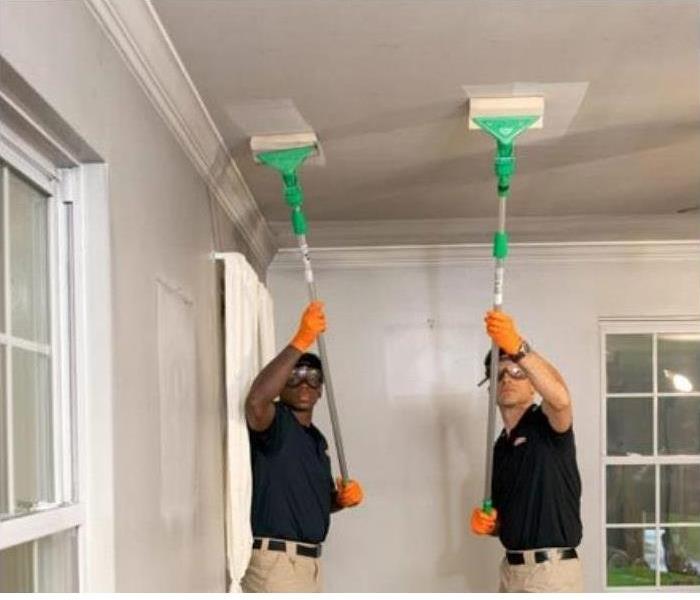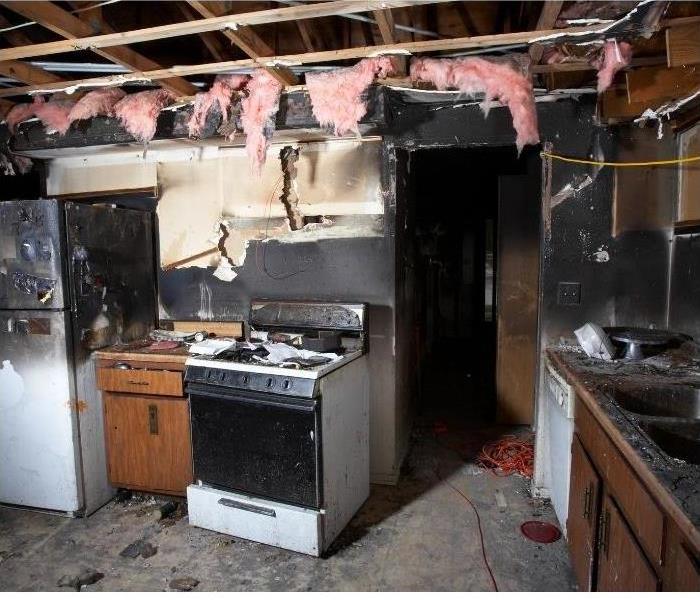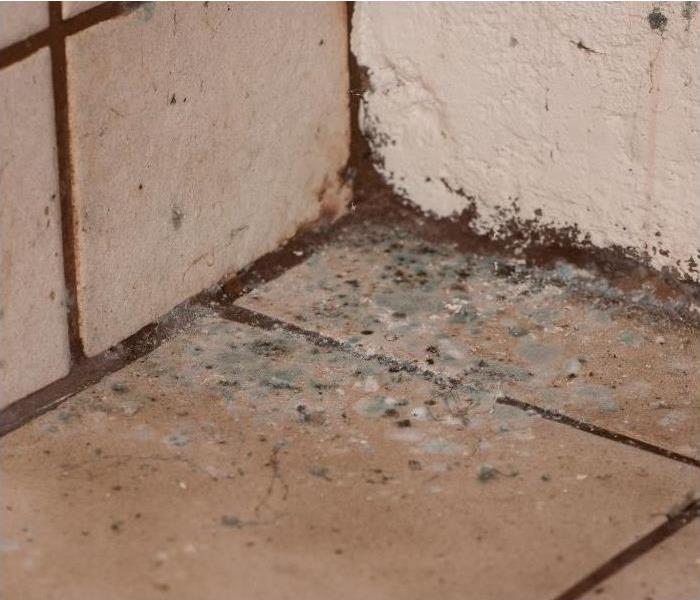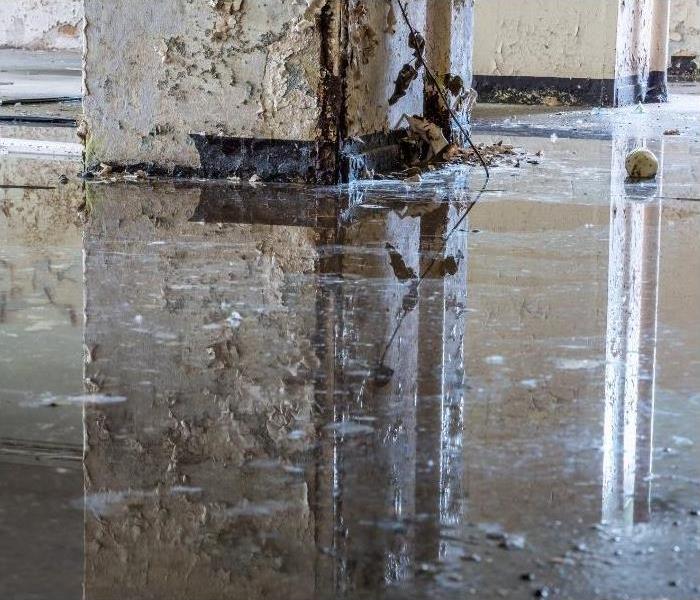Recent Posts
Finding the hidden menace: understanding mold in your home
1/29/2024 (Permalink)
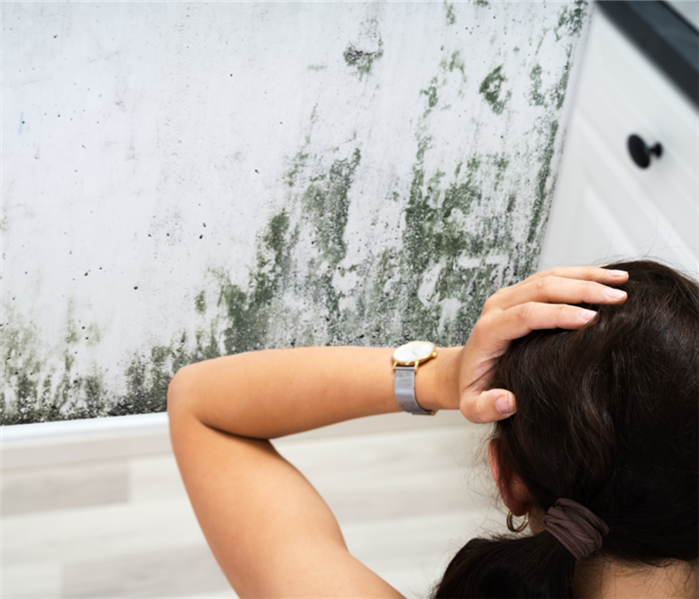 Mold growing on the walls
Mold growing on the walls
Imagine this: whether you're unlocking the entrance to your comfy house after a long day or coming into your bustling company space, ready to serve customers, a strange odor draws your attention. As you examine, your gaze falls on a faint yet threatening intruder—mold. This uninvited guest sees no difference between the comfort of your house and the professionalism of your business; it thrives in both. Mold is not simply an eyesore; it may also cause health problems and threaten the fundamental structure of your home. In this essay, we will look at the hidden nature of mold, including its sources, associated risks, and possible treatments. Knowing about and managing mold-related dangers is critical for maintaining an enjoyable and secure atmosphere for everybody, whether you own a house or a commercial property.
- What is mold?
Mold is a fungus of microscopic size that multiplies by air through spores and can occur both indoors and out in areas with high humidity. Mold is commonly seen in residential and commercial properties as fuzzy, discolored areas on walls, ceilings, and other surfaces. It reproduces by releasing microscopic spores into the air, which seek out wet places to settle and thrive in. Mold plays a crucial role in nature, but its presence indoors can be problematic.
- What causes mold to grow in residential and commercial buildings?
Understanding which conditions stimulate mold growth is critical. Mold flourishes in situations with high moisture levels, and several factors contribute to its spread:
- Leaks: Undetected leaks, whether from roofs, pipes, or appliances, provide an ongoing source of moisture, creating a fantastic breeding ground for mold.
- Water damage: If previous water damage, such as flooding or spills, fails to be properly handled, residual moisture may build up and promote mold growth.
- Poor ventilation: keeps moisture indoors, particularly in enclosed places such as restrooms, kitchens, and storage rooms.
- High humidity levels: Elevated humidity levels, which are common in humid places, create an environment conducive to mold growth.
- How can mold affect your health?
Mold can have a variety of effects on health, ranging from minor discomfort to serious respiratory problems. Here's a quick overview:
- Allergic reactions: Mold spores are allergens that can cause sneezing, runny nose, itchy eyes, and skin irritation.
- Respiratory issues: Mold exposure can exacerbate symptoms of asthma, such as coughing, wheezing, and difficulty breathing.
- Skin irritation: Direct contact with mold can irritate the skin.
- Individuals with compromised immune systems: may be more vulnerable to fungal infections caused by specific forms of mold.
- Can mold be detected before it becomes visible?
Yes, mold can be detected before it becomes visible. There are several ways to detect mold early on:
- Musty Odor: Mold often produces a distinct musty smell. If you notice an unusual odor in your home or building, it could indicate the presence of mold.
- Water Damage: Mold thrives in damp and moist environments. If you have experienced any water leaks or damage, it is important to thoroughly inspect and address any potential mold growth.
- Hidden Mold: Mold can grow in hidden areas such as behind walls, under flooring, or inside ceilings2. These areas may not be immediately visible, but if you suspect mold growth, a professional inspection may be necessary.
- Allergy Symptoms: Some individuals may experience allergic reactions, such as sneezing, coughing, or respiratory issues when mold is present. If you or others in your home are experiencing unexplained allergy symptoms, it could be a sign of hidden mold.
Regular examinations, even in places that are not easily visible, are critical for early discovery. Pay attention to hidden areas such as basements, crawl spaces, and under furniture. Controlling mold in its early stages is critical to preventing major damage and health problems.
- How can mold growth be prevented and controlled?
- Check that your home or company has adequate air circulation. Use exhaust fans in bathrooms and kitchens to minimize humidity and prevent moisture buildup. Leaks should be repaired as quickly as feasible. To prevent mold from forming, take immediate action if you notice a leaking roof, a plumbing problem, or a broken appliance.
- Ideal indoor humidity levels range from 30 to 50%. Use dehumidifiers in wet areas, especially basements, and consider utilizing air conditioners to minimize humidity during hot weather.
- Use mold-resistant products, especially in moisture-prone areas like bathrooms and basements. Mold-resistant drywall and coatings may give an additional layer of protection.
- Inspect your property regularly, focusing on moisture-prone areas. Regular exams can help discover and manage defects before they become serious issues.
Mold prevention is a constant endeavor that requires a combination of good practices and consciousness. By adopting these strategies, you create a less favorable atmosphere for mold, reducing the risk of infestations and related issues.
Mold is a difficulty that requires awareness and preventative measures, whether you run a pleasant house or a thriving business. Understanding the factors that contribute to mold growth and taking prompt action can help you keep your living or working environment healthy and friendly for everybody. Stay well-informed be proactive, and let the struggle against mold begin with awareness and instruction.
Investing in mold protection today safeguards the property and its occupants.
For professional mold remediation services, call SERVPRO® at (480) 503-2090. Trust SERVPRO for reliable mold remediation, abatement, and restoration. Secure your space with us—prevention is the first line of defense.
Fire Safety for Businesses: Protecting Your Property
1/26/2024 (Permalink)
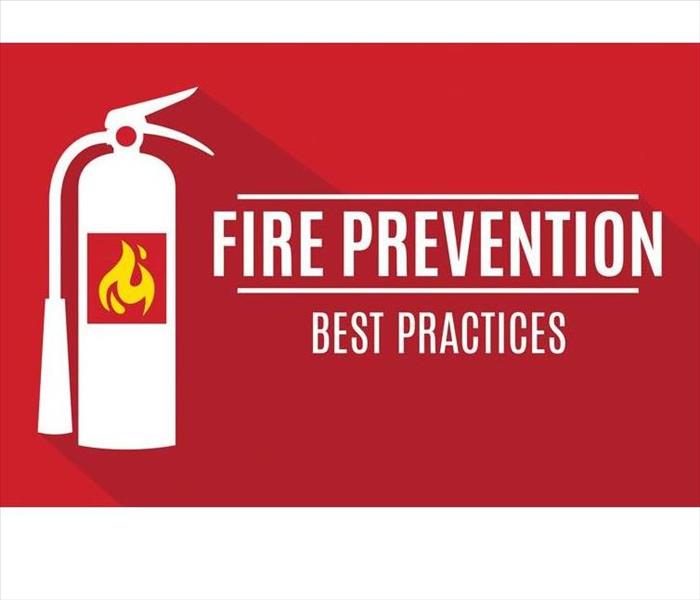 Fire prevention
Fire prevention
Fires are an important threat to companies, and the consequences can be disastrous. From economic damage to the potential loss of people's lives, businesses must develop efficient fire prevention procedures. In this article, we'll look at useful recommendations for businesses, covering fire prevention techniques, emergency response plans, and the importance of expert restoration services.
Understanding the most common causes of company accidents is the first step toward prevention. Electrical problems, heating and cooking equipment, combustible materials, and human error are frequently the cause of such events. Businesses may modify their fire security techniques according to the risks they notice.
Easy Fire Prevention Tips:
- Electrical safety requires regular maintenance. Ensure that all equipment is utilized appropriately and that any defective wiring is fixed promptly.
- For optimal building safety, consider purchasing fire-resistant materials and designs. To make your home safer, upgrade your insulation and roofing, and add fire-rated doors and windows.
- Properly keeping and handling combustible items is essential. Implement safe storage methods, train employees on handling dangerous substances, and keep flammable objects away from potential ignition sources.
- Establish designated smoking places away from flammable objects. To minimize the chance of accidents, discourage smoking around possible risks of fire.
Emergency Readiness: Planning and Action Strategies
- Establishing and communicating proper evacuation procedures is essential for ensuring safety and property. Regular employee training drills are essential for increasing knowledge of processes, and exit routes must be well-marked and easily accessible. This preemptive approach enables a timely and orderly response during an emergency.
- A reliable fire detection system is essential for effective emergency response. Installation and frequent maintenance of smoke detectors and alarms are critical. Consistent testing ensures their functionality in crucial situations, providing early warnings required for effective emergency response and evacuation.
- Plan for effective communication amid disasters. Develop a comprehensive communication plan that includes emergency contact information as well as communication tools. Ensuring that everyone is informed and on the same page may significantly enhance emergency coordination, leading to a safer and more effective response.
Getting Back on Track with Restoration Services:
- Acting Promptly
The aftermath of a fire requires rapid treatment. Acting quickly is crucial for preventing additional harm and starting the repair procedure. A timely assessment of the degree of the damage is required to establish a complete repair plan. This prompt response not only helps to save precious assets but also plays an important part in reducing downtime for your organization.
- Collaborating with Professional Restoration Services:
Professional restoration services are essential for a successful recovery. These experts bring a plethora of knowledge and experience to the table, resulting in a quick and effective cleansing and restoration procedure. From assessing structural damage to adopting effective recovery plans, their knowledge accelerates the restoration process, allowing your firm to resume normal operations as soon as feasible.
- Insurance Collaboration:
After a fire, navigating the aftermath can be financially tough. Working with your insurance provider can help relieve these pressures. Working closely with your insurance to document damage for claims is critical. Ensure that your insurance coverage includes restoration services since this not only protects your financial interests but also allows for a more efficient and comprehensive recovery process. A well-documented and collaborative strategy between restoration providers and your insurance carrier is critical to ensuring a successful repair outcome for your company.
Continue Researching and Stay Safe:
- Employee Fire Safety Instruction: A strong fire safety program starts with regular training for employees. Regular fire drills guarantee that personnel are not only aware of but also well-versed in evacuation methods. These drills increase familiarity, minimizing terror during genuine situations. Furthermore, offering continual education tools is critical to keeping everyone up to date on the most recent safety procedures. Continuous learning ensures that your staff is proactive in preventing and responding to fire incidents, resulting in a safer workplace.
- Creating a Safety Culture: Safety is more than simply a set of laws; it should get into all elements of your business. Recognizing and cheering safe behavior in employees develops a sense of responsibility and ownership. Positive reinforcement motivates employees to actively contribute to workplace safety. Businesses foster a culture of safety in which everyone feels empowered to disclose and handle possible dangers, resulting in a collective commitment to maintaining a secure and protected environment.
- Follow Local Regulations: Following local fire safety rules is essential for prudent business management, in addition to being a legal necessity. Regularly updating fire safety measures based on code changes is critical to being compliant and, more importantly, improving the safety of your property. Collaborating with local fire departments for compliance checks ensures that your company not only meets the required standards but also receives professional views and guidance. Businesses that are proactive in following local standards contribute to the general safety and well-being of their employees and customers.
Finally, protecting your business from fire involves a combination of proactive steps, preparation, and expert teamwork. Businesses that follow these fire protection techniques can considerably lower the probability of fire incidents and mitigate the possible damage to their property and personnel. Remember that a minor investment in preventive today might save your company from big losses later. Stay safe, and prepared, and preserve what's most important.
Remember the importance of prompt restoration when protecting your business from fire hazards. At SERVPRO, we provide exceptional fire damage restoration services that provide more than simply solutions; we also provide peace of mind and a secure commercial area. Call SERVPRO at (480) 503-2090 for emergency assistance, available 24 hours a day, seven days a week. Invest in the security of your business with us.
The Silent Threat: Understanding Smoke Damage in Homes
1/22/2024 (Permalink)
 Smoke damage in your home
Smoke damage in your home
Not only do the flames leave a mark after a fire, but so do other elements. The stealthy threat of smoke damage stays like a shadow, silently corroding the soul of home. Understanding this sneaky intruder is beyond merely knowledge; it is essential for sustaining the place of safety we call home.
- What frequently takes center stage in the aftermath of a fire, leaving a less obvious but equally dangerous threat lurking beneath the surface?
The aftermath of a fire is typically marked by visible destruction, but the often-overlooked threat of smoke harm quietly affects homes in ways that are not immediately noticeable. Aside from the obvious coloring and aromas, smoke residue infiltrates every nook and cranny, lowering indoor air quality and permeating materials. This invisible threat may pose long-term health consequences, such as breathing troubles and discomfort. Recognizing the numerous nuances of smoke damage is critical for a thorough restoration approach that extends beyond surface removal. Immediate action is required to alleviate not only obvious damage but also hidden, lingering dangers that can endanger a home's security and well-being.
- What is smoke damage, and how does it distinguish from being just the consequence of a fire?
Smoke damage is a convoluted combination of soot, ash, and toxic substances. Its insidious character stems from its tendency to enter and attach to surfaces, leading to discoloration and persistent scents throughout the home.
- How does smoke damage vary, and what role do different materials play in its severity?
Smoke damage varies depending on the type of smoke and the materials used:
Wet smoke is a result of sluggish burning with high water content.
- Dense and sticky, leaving greasy residues.
- Results in severe and difficult-to-clean damage.
Dry smoke results from quick burning with minimal water content.
- Lighter and thinner, penetrates surfaces deeper.
- Initially appears to be easy to clean, but can cause severe harm.
The Role of Materials in Damage Severity:
- The intensity of smoke damage is closely related to the type of material used.
- Synthetic materials, polymers, and chemicals emit dense smoke, causing further harm.
- Surface hardness and porosity influence smoke particle absorption and retention.
- What are the immediate implications of inhaling smoke residues?
Inhaling smoke remnants causes more than merely apparent harm and poses serious risks to one's health. The invisible particles in the air during a fire may contain toxins and cancer-causing agents, causing respiratory problems, eye discomfort, and long-term health risks. Recognizing these threats is critical for timely intervention and comprehensive restoration efforts. Acting quickly not only preserves immediate health, but it also reduces the risk of adverse health effects caused by exposure to toxic smoke residues.
- How can smoke damage influence the underlying structure of a house?
Smoke damage can threaten a home's structural integrity, posing a risk to both health and infrastructure. The invisible residue gradually infiltrates construction materials, weakening essential components. This balance necessitates an in-depth investigation and quick intervention to ensure the security of residents and the longevity of the home's structure. Furthermore, the continuous existence of smoke residue may result in leftovers odors, emphasizing the vital need for complete restoration. This not only prioritizes health, but also provides a pleasant place to live free of the long-term effects of smoke harm.
In the aftermath of a fire, a comprehensive understanding of the consequences of smoke damage is essential to effective mitigation. Beyond the visible damage, the silent threat infiltrates homes, affecting air quality and the strength of structures. Distinguishing smoke damage from fire aftermath reveals its detailed the structure of soot, ash, and toxic substances, which has a long-lasting influence.
Variations in smoke damage, caused by smoke type and substance, emphasize the distinguishing features of wet and dry smoke. Material choices increase the impact, with synthetics creating dense smoke and surface properties influencing particle retention. The inhalation of smoke remains causes health concerns, highlighting the importance of prompt identification and intervention.
Smoke damage not only threatens a home's construction but also produces persistent scents, underscoring the importance of comprehensive restoration. Swift, comprehensive action is essential to address both visible and hidden hazards, protecting properties from the long-term impacts of smoke damage.
To summarize, proactive understanding and early intervention are critical in navigating the aftermath of a fire. To protect our houses' safety and well-being, restoration operations should address not only visible damage but also the hidden complications of smoke damage. If damage has already occurred, call (480) 503-2090 for prompt and effective restoration, limiting the extent of the damage and preventing long-term problems like mold growth. Taking this proactive approach to recovering your house ensures that it regains its pleasant nature efficiently and successfully.
Winter ready: Tips for preventing and dealing with water damage
1/11/2024 (Permalink)
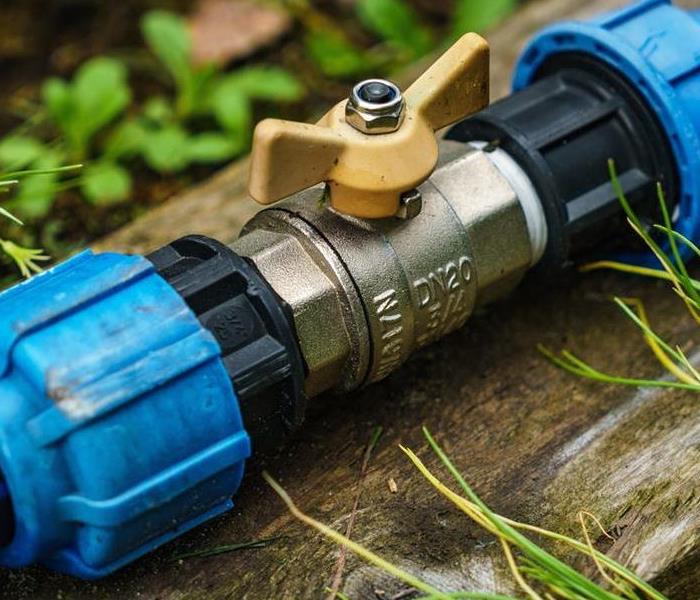 Protect your water pipes during winter time, to avoid future water damage.
Protect your water pipes during winter time, to avoid future water damage.
As now we’re in the winter season, you need to ensure your home is a fortress against the season's unique demands. Winter may bring its own set of challenges, especially when it comes to potential water damage. In this guide, we'll walk you through essential steps to fortify your home, making it ready for whatever weather comes its way. From shielding your pipes against the cold to maintaining a robust roof and drainage system, we've got the insights to keep your home safe.
- Protect the pipes before a freeze
Fortifying your pipes against freezing temperatures becomes crucial for preventing potential water damage and necessitating water restoration, damage repair, or cleanup. To shield your plumbing, insulate exposed pipes and faucets with heat tape or pipe insulation. This defensive layer minimizes the risk of pipes bursting due to freezing, thus reducing the likelihood of needing extensive water restoration services. Ensure to disconnect and store garden hoses, preventing ice formation that might lead to damage, potentially requiring water damage repair. Consider the installation of frost-proof outdoor faucets for added protection, mitigating the need for water cleanup efforts in the aftermath of freezing temperatures.
- Repair and protect the exterior of your home
It is imperative to fortify your home's exterior against potential water damage, emphasizing a strategic approach to water restoration. Initiating a thorough inspection is the first line of defense, identifying and promptly sealing any gaps, cracks, or holes to enhance your home's resilience against water infiltration.
When preparing your home for winter, paying close attention to your roof is vital in preventing potential water damage and minimizing the need for subsequent water restoration and cleanup. Start by inspecting your roof for signs of wear and tear, focusing on areas prone to holes and cracks. Check for missing or damaged shingles, as these can be entry points for water. During your inspection, be vigilant for water stains on the ceiling, peeling paint, or any unusual discoloration, as these can be indicators of water penetration. If you notice any issues, promptly fill holes and cracks using the appropriate roofing sealant.
This proactive step serves as a crucial defense against water infiltration, reducing the risk of interior damage and the subsequent need for water cleanup and restoration services.
- Do regular mold inspections
In your winter readiness checklist, don't overlook the importance of regularly inspecting your home for mold growth. Vigilance in this regard can significantly contribute to minimizing the risk of water damage and subsequent demands for water restoration and cleanup services. Pay particular attention to areas prone to moisture buildup, such as kitchens, bathrooms, and attics. Watch for visible signs of mold, such as discoloration, musty odors, or peeling wallpaper. Additionally, be mindful of any recent water leaks or flooding, as these incidents can create an ideal environment for mold growth. If you detect any suspicious signs, take immediate action to address the issue. Timely mold inspection and remediation not only protect your home's structural integrity but also diminish the likelihood of requiring extensive water damage repair.
- Maintain a clean drain system
Ensuring your drain system remains clear and functional is a fundamental aspect of winter preparedness, vital in reducing the risk of water damage and the subsequent need for water cleanup and restoration services. Regularly inspect and clean your gutters and downspouts, removing any debris that might obstruct proper drainage.
Clogged gutters can lead to water overflow, potentially causing damage to your home's foundation or siding. As part of your routine maintenance, also check for any signs of water pooling around your property, which could indicate drainage issues. This simple yet effective step contributes to a comprehensive approach to winter readiness.
At SERVPRO, we realize the importance of a secure home. If you've already faced the aftermath of water damage, our expert team is here to provide swift and reliable restoration services. We specialize in water damage repair, cleanup, and restoration, ensuring your home bounces back from adversity. Call us today at (480) 503-2090 for a resilient, ready home that stands strong in the face of weather challenges.
The Top 10 Causes of Water Damage in Homes and How to Prevent Them
1/5/2024 (Permalink)
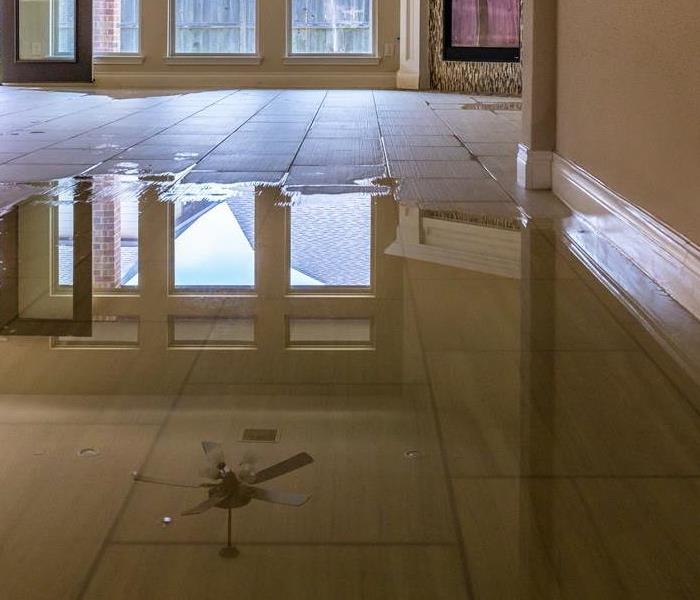 Flooded living room area
Flooded living room area
Did a pipe ever burst randomly and had your whole house flooded? Then you know the damage it can do to your home. Whether we talk about a leaking pipe, a poorly sealed window, or a natural disaster, understanding the potential causes of water damage is the first step towards protecting your home.
Here you have The Top 10 causes of water damage in homes and how to prevent them:
1. Leaking or Burst Pipes
Pipes can leak or burst due to age, freezing temperatures, or corrosion. This is one of the most common causes of water damage. Have a plumber inspect your plumbing every two years for leaks and fix any issues promptly. Consider insulating your pipes in colder climates to prevent freezing. Some houses had the insulation done during construction, while others didn’t, so it is best to inquire about what situation you are in.
2. Roof Leaks
A roof is not something you can forget about, as it gets damaged over time due to bad weather. Damaged or improperly maintained roofs can allow water to penetrate, causing leaks and potential structural damage. Regular roof inspections are critical for prevention.
What is more, different roof types have different life spans. For example, asphalt shingle roofs can last 15-20 years, while clay tiles last more than 50 years. Take this into consideration, as you might need to replace your roof shingles from time to time.
3. Faulty Appliances
Appliances like washing machines and dishwashers may malfunction and develop leaks, which might cause a fire in certain conditions. Regular maintenance, hose replacements, and timely repairs can prevent water and fire damage.
Some of the most common problems are:
- Washing machine: Leaking hoses, faulty water supply lines, malfunctioning pump;
- Dishwasher: Leaks in the dishwasher's hose, pump, or poor door seal;
- Water heater: Corrosion or a malfunctioning pressure relief valve;
- Refrigerator: The refrigerator's ice maker or water dispenser can develop leaks, and a clogged defrost drain may lead to water pooling in the fridge;
- HVAC System: Clogged condensate drain lines or a malfunctioning condensate pump can cause water to back up into the system and leak.
4. Clogged Gutters and Downspouts
Regularly cleaning the gutters and downspouts, especially during fall, should be enough to prevent water overflow. You can also install gutter guards to minimize debris accumulation.
5. Basement Flooding
Basements are the most prone to flooding, as they are the lowest level in your house. Many problems can cause a flood in your basement, some of which are:
- A pipe leak or hot-water tank failure;
- Drainage failure.
- A blocked or failed sanitary lateral;
Some measures you can take include:
- Include crystalline growth compound in the concrete pour of walls;
- Install dehumidifiers and special fans;
- Install window well covers;
- Regularly test your floor drain;
- Install a sump pump;
- Ensure proper grading around the foundation.
6. HVAC Issues
HVAC malfunction can lead to water leaks or condensation issues. Have your HVAC system serviced every six months to keep your air conditioner clean and functioning properly.
7. Poorly Sealed Windows and Doors
Drafts around the window, irregular temperatures, foggy windows, or difficulty in opening can mean your windows and doors are not tightly sealed, letting water and cold air pass through. This will cause mold to form around furniture and in other dark places.
You can seal drafty windows and doors with spray foam, weather-strip, or draft stoppers.
8. Foundation Cracks
Horizontal foundation cracks are a serious cause for concern, especially if accompanied by wall bowing. The most reliable and cost-effective method to repair the foundation crack is by sealing it up with epoxy and polyurethane crack injections. Remember to have it done by a professional.
9. Overflowing Bathtubs or Sinks
Forgetting to turn off the tap while filling a bathtub or sink, as well as clogged pipes, can lead to overflow. Avoid leaving running water unattended for too long to prevent overflow. Also, clean the curved pipe under the sink, called the P-Trap, every one to three months to avoid clogging.
10. Natural Disasters
Events such as floods, earthquakes, or hurricanes can cause severe water damage. While prevention is limited, investing in insurance and taking precautions can minimize damage.
Elevate utilities in flood-prone areas and reinforce your home against earthquakes if you live in a seismic zone. Any other prevention method described can help you prevent damage in case of a natural disaster.
It's crucial to act quickly if you notice any signs of water damage. Prompt attention can help minimize the damage and prevent long-term issues such as mold growth. If damage has already been done, call SERVPRO of Phoenix at (480) 503-2090 and have a team of qualified technicians properly clean and restore your house so that it feels like home again.
Work with Highly Trained Professionals for Your Commercial Cleaning Needs
10/9/2023 (Permalink)
SERVPRO is a household name that people know and trust for all their residential disaster cleanup services such as fire damage restoration, mold remediation and more. What many people may not know is that SERVPRO of Phoenix offers commercial cleaning services too? SERVPRO offers commercial cleaning solutions for businesses of all sizes, so now you can call us for your residential and commercial cleaning need!
Cleaning services you can trust
Common wear and tear happen gradually in your office. When grime, odor, and moisture challenges go beyond the scope of your regular janitorial staff, you can call SERVPRO of Phoenix for prompt and professional service. Our services can help in removing odor problems or deep cleaning flooring or carpets, so your workspace look its very best. The everyday commercial cleaning services we offer include air ducts and HVAC, carpet and upholstery cleaning, drapes and blinds cleaning, ceilings, walls and hard floor cleaning, and odor removal and deodorization.
When your regular cleaning crew can’t get you the clean you need, SERVPRO’s highly trained team of service professionals can get the job done.
Commercial cleaning for all situations
When your business suffers a loss or unforeseen event that requires professional cleaning, SERVPRO of Phoenix is the only business to call! We offer several commercial services for businesses of any size, including biohazard cleanup, sewage cleanup, trauma and crime scene cleanup and vandalism.
When any of these unforeseen needs arise, rest assured that our crew has specialized training and products to get your property back to business. We also offer our premiere flood restoration, fire restoration, mold remediation and storm damage recovery services as well. Your business can rest assured knowing that no matter what disaster strikes, SERVPRO of Phoenix can be onsite, 24/7, to help.
Big cleanup job? No problem!
The SERVPRO Commercial Large Loss Division is comprised of our best of the best in restoration services. Our elite large-loss specialists are highly qualified and strategically positioned throughout the US to handle any size disaster, anywhere in the country. Every large loss is supervised by a commercial operations manager to help ensure seamless communication and timely mitigation. If your business suffers a significant loss, you’re in good hands with SERVPRO.
Now that you know SERVPRO of Phoenix handles both residential and commercial cleaning services, why use anyone else? Call us at 480-503-2090 for any needs that you have, big or small!
How to Recover from A Kitchen Fire in Your Phoenix Home
9/25/2023 (Permalink)
Many fires experienced by Phoenix homes start in the kitchen. Between ovens, stoves, toaster ovens and other electrical appliances, as well as the potential for grease fires, there are plenty of opportunities for things to go wrong quickly and fires to start. Understanding what happens once the flames are out will help homeowners recover from a kitchen fire. SERVPRO® of Phoenix can help!
When a kitchen fire occurs, the damage adds up quickly
It’s a fairly typical scenario: A fire starts in your kitchen, say, from a grease fire. While you were fortunate enough to distinguish the flames before it spread into another room, you’re still facing significant damage in one of the most functional rooms in your house. Perhaps cabinets were charred where you store canned goods, packaged staples, and backup condiments. Your countertops and surrounding walls were impacted by the flames as well. You need help with smoke and soot damage, as well as an assessment of the best steps to take to repair and replace burned appliances. Regardless of how severe the fire, there’s work to be done.
Your first line for recovery is calling in the experts
Once the SERVPRO® fire damage team arrives, they’ll conduct a comprehensive inspection of the fire-affected area and offer a recovery plan. They’ll look at any potential structural damage, and then go on to assess damage to appliances and other items in the kitchen. They’ll also do a thorough examination of what items were damaged with soot, and what kind of odor control measures need to be taken. The large team of IICRC-certified professionals can conduct services ranging from debris removal and reconstruction through odor removal and environmental purification.
The cleaning process after a kitchen fire
After structural issues, if any, have been addressed, any damaged appliances are removed, but the work doesn’t stop there! Our technicians begin the process of cleaning with appropriate tools and products. When the pantry and cabinet areas have their turn, we may recommend most of the items be discarded depending on how heavy and damaging the smoke and soot are. Fire residue and the chemicals in the extinguisher used to douse the flames filter into your foods, contaminating them, and making them unfit for consumption. SERVPRO® of Phoenix fire restoration specialists therefore strongly suggests disposal of any consumables stored in permeable bags and boxes. Even the food stored in a freezer or refrigerator is at risk of tainting from smoke, and other unsafe compounds as their seals are not airtight. Exposed fruits, vegetables, and baked goods all need to be tossed as the dangerous residues caused by the fire do not completely wash away.
Fire damage is painful, but restoration doesn’t have to be
Many types of fires happen every year in Phoenix. The experts from SERVPRO® of Phoenix are here to help make your traumatic experience a little easier to recover from by offering our expert services in fire damage restoration. Give us a call at (480) 503-2090 for a post-fire inspection to get the restoration started.
You Need a Mold Inspection After a Water Leak
9/12/2023 (Permalink)
The monsoons have been fairly mild this year, but that doesn’t mean what rain we did get didn’t cause damage. We’ve been getting a lot of calls from people who experienced water leaks in their home; some caused by the storms, some by broken pipes. Several of these calls are from Phoenicians that are out of town for the hot summer season and are only now discovering water leak issues as they return to their home for the cooler weather on the way. Fixing the leak and drying out the premises may not be enough. If that water stood for any length of time, you need a mold inspection.
Signs of mold in your home
Even if the water damage was addressed fairly quickly, your home may still have mold. You may already suspect you have an issue. A musty smell and an overall feeling of dampness, even after the water leak was repaired, is a good sign you may have mold issues. If you suspect mold growth or have noticed a mold colony on your flooring or walls, we guarantee you have a mold problem! Whether it is from a recent flood or maybe a small leak, the problem needs to be addressed. SERVPRO® of Phoenix specializes in mold remediation.
The mold remediation process
Keep in mind that mold is present everywhere: indoors and outdoors. Services that claim “mold removal” services are misleading. What your Phoenix home needs is mold remediation, where specialists come in and detect mold, use a variety of containment procedures to contain the mold to keep it from spreading any further, and then use antifungal and antimicrobial treatments to eliminate mold colonies and help prevent new colonies from forming. It may be necessary to remove mold-infested materials like drywall and carpeting to remediate heavy mold growth; our mold professionals will advise you on whether or not that’s necessary. It’s important to work with a professional who understands the mold remediation process and can address your unique situation to ensure you’re getting the issue resolved quickly and correctly.
Working with a water and mold pro is important
If your Phoenix home has a water leak, big or small, stopping the leak is only half the battle. Work with a water and mold specialist like SERVPRO of East Phoenix who will come in and not only handle water damage repair and restoration, but do mold remediation to ensure you don’t experience any additional problems this monsoon storm season.
Early remediation helps prevent stubborn mold infestations. Call SERVPRO® of Phoenix at (480) 503-2090. We are available every day to offer assistance and advice.
Storm Damage Brings Odor Challenges
9/7/2023 (Permalink)
As the monsoons are wrapping up, many office buildings experience flooding or water leaks from heavy storms. When water damage happens, there are steps to take to address not only the damage but also the odors that may arise because of water damage. Professional restoration experts can eliminate such odors from your property after an occurrence of commercial water damage in Phoenix. Here at SERVPRO® of Phoenix, we use a multi-approach method to fight odors after any kind of water damage. A variety of deodorants and odor-fighting techniques can eliminate the odors in no time. Here are a few methods that work the best.
Several methods for odor removal
Odors often come from various sources after a water damage incident. It can be challenging to find all the sources and determine a specific method to combat the individual, which is why businesses often struggle with odor well after they have cleaned their property. Whether the odor is from stagnant water or mold growth, SERVPRO knows it is best to use multiple methods that use various deodorants to get a better result. Our IICRC-certified SERVPRO® technicians use a combination of several types of deodorants that can combat the most common smells after a commercial water damage event.
Deodorizing to combat odors
A single type of deodorizing agent is not always sufficient to address odors from various sources. Different odors need different deodorants. Masking agents in time-release beads are also used to cover up unpleasant odors with a pleasant-smelling scent. Professionals use these agents to combat odors as well. There are some odors that only appear to remain after cleaning as occupants have become accustomed to the unpleasant smell; masking agents help address that issue. Pairing agents combine with the odor-causing particles in the air and neutralize them. Once these agents combine with the particles in the air, they cause them to fall to the ground, which can then be cleaned. These agents are often used in ultra-low volume foggers and wet foggers. Electrically generated deodorizing agents such as ozone gas are used after a move-out where odors linger. The Ozone is a reactive molecule that can combine with the odor-causing particle and neutralize it. The technicians use this method if the odors have penetrated deeply in the surfaces.
Let the odor removal expert help
A combination of all these techniques and agents is essential to eliminate the odors from your commercial property after water damage. If you struggle with odors after experiencing water damage or flooding in your office building, call SERVPRO® of Phoenix today at (480) 503-2090 to discuss your restoration needs with one of our professionals.
Fire Restoration Can Save Businesses Time and Money
10/7/2022 (Permalink)
Every building can suffer the devastation of fire damage. Without professional help, a fire can close the doors of businesses for an extended period of time or for good. Regardless of how big or small a fire is, working with a trained fire remediation company helps businesses save time and money.
SERVPRO understands fire remediation
We understand how commercial fire damage can affect your business. We have a highly trained team of IICRC-industry-certified professionals who can help return your business to normal operations quickly should a fire occur. SERVPRO understands the urgency involved in protecting your business and provides you with every service necessary to help you minimize any damages your facility might experience after a fire, including smoke damage, water damage from extinguishing the fire, and lingering odors. Our technicians work on the fire and smoke damage found throughout your property, ensuring that every area gets checked and cleaned thoroughly.
Advanced equipment and expertise makes a difference
With access to advanced equipment, SERVPRO technicians remove smoke damage to carpeting, walls, ceilings, electronics, wood, furniture, documents, as well as any machinery, appliances, or other equipment that helps maintain operations for your business. We also have extensive experience in the decontamination of HVAC systems and ductwork, an often overlooked area to consider after a fire. SERVPRO technicians specialize in both document and electronics restoration services. We can help save furniture, electronic fixtures, and equipment while cleaning and deodorizing the entire structure with a broad range of cleaning methods. We inspect your entire facility, remove all fire-damaged materials, and work hard to limit any losses you might experience.
Our full range of services will save your business time and money
By providing a full range of fire remediation services, we help you get your business back on track as soon as possible. SERVPRO offers full-service solutions unique to the particular situation that helps return your business to a quality pre-damage condition. Our technicians are also trained to minimize any interruptions to your business's normal operations, helping you continue offering services whenever possible. SERVPRO of Phoenix can manage any emergency repairs, 24/7 and provide you with a stress-free restoration process from start to finish. Give us a call to begin your property's recovery today. (480) 503-2090






 24/7 Emergency Service
24/7 Emergency Service




